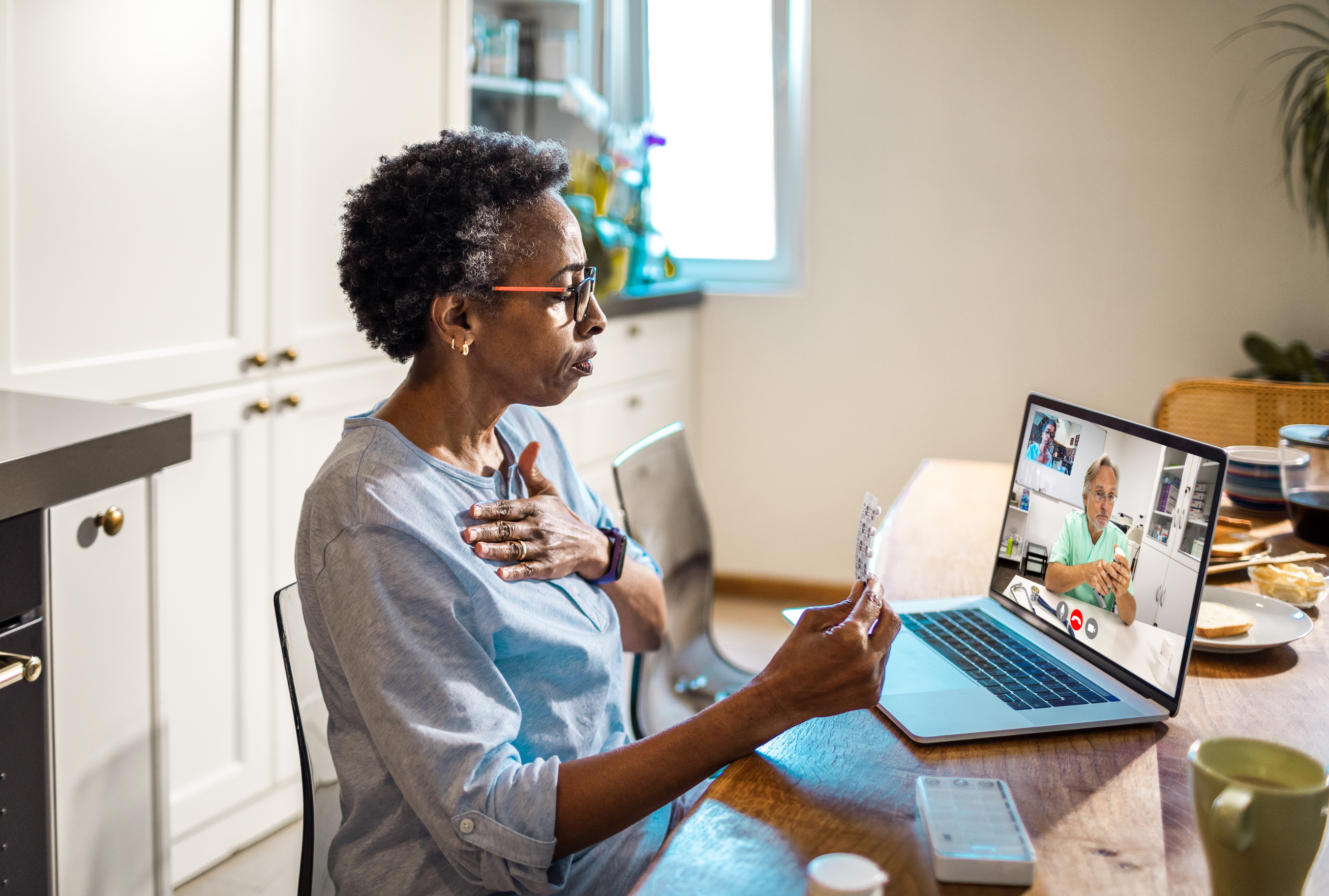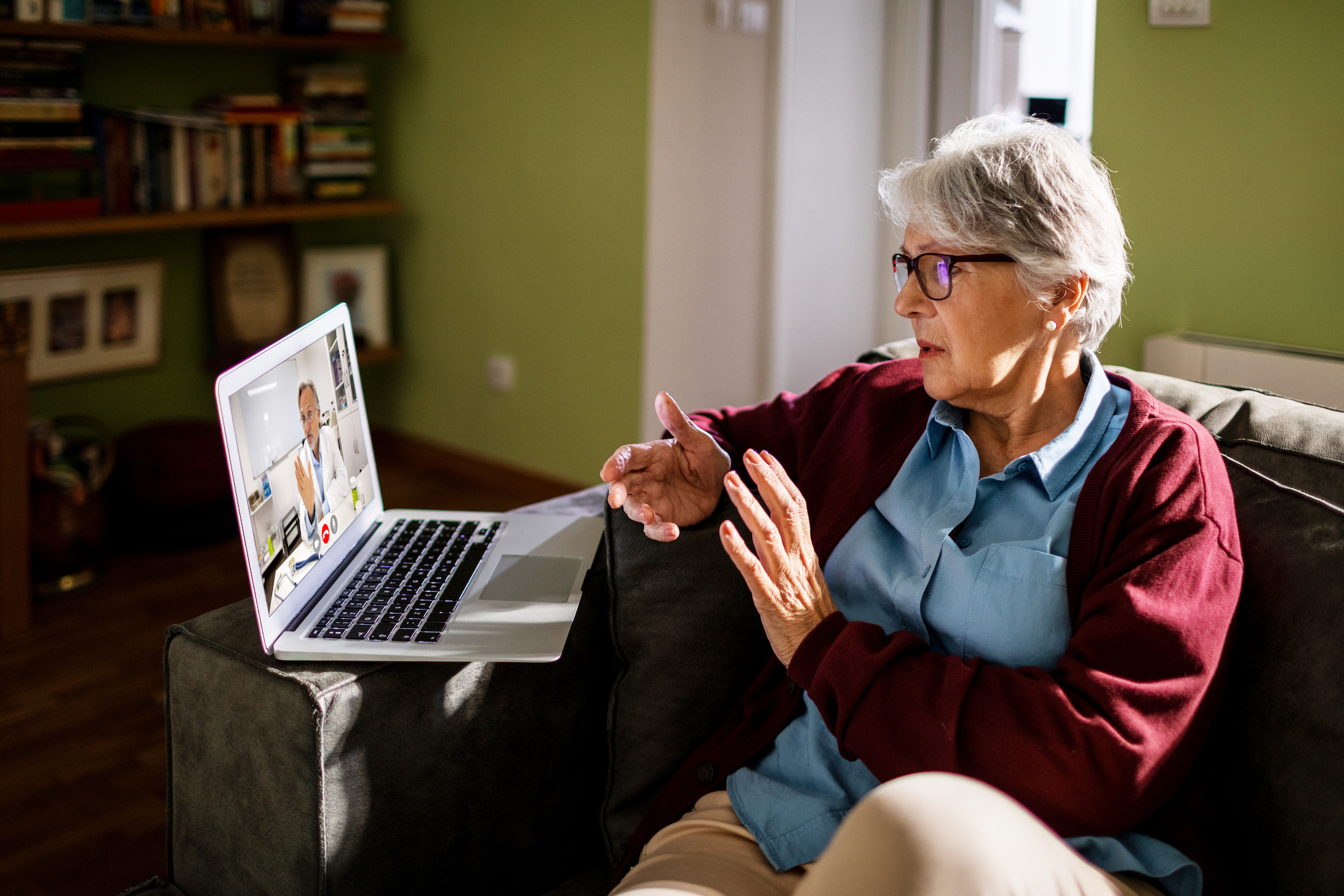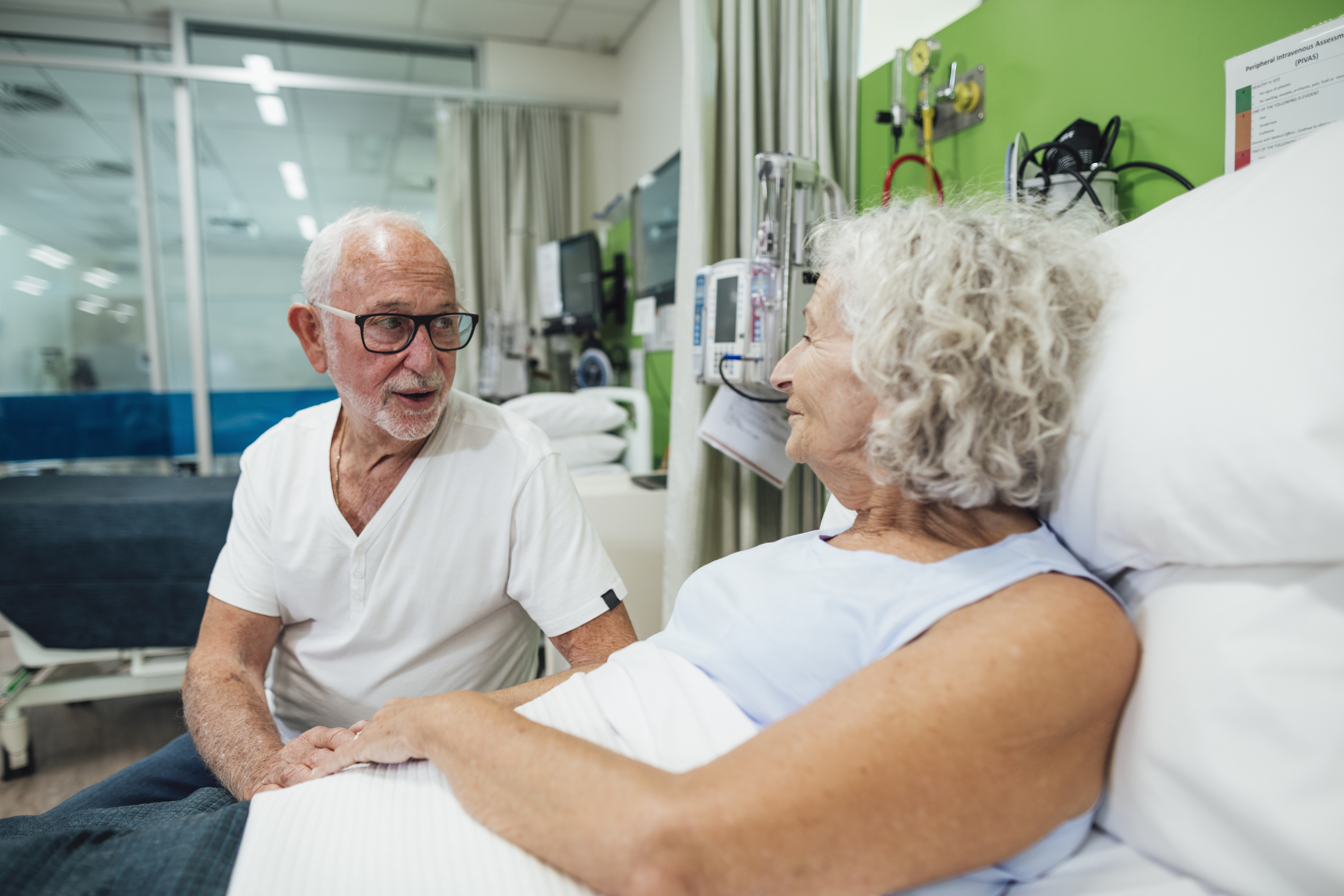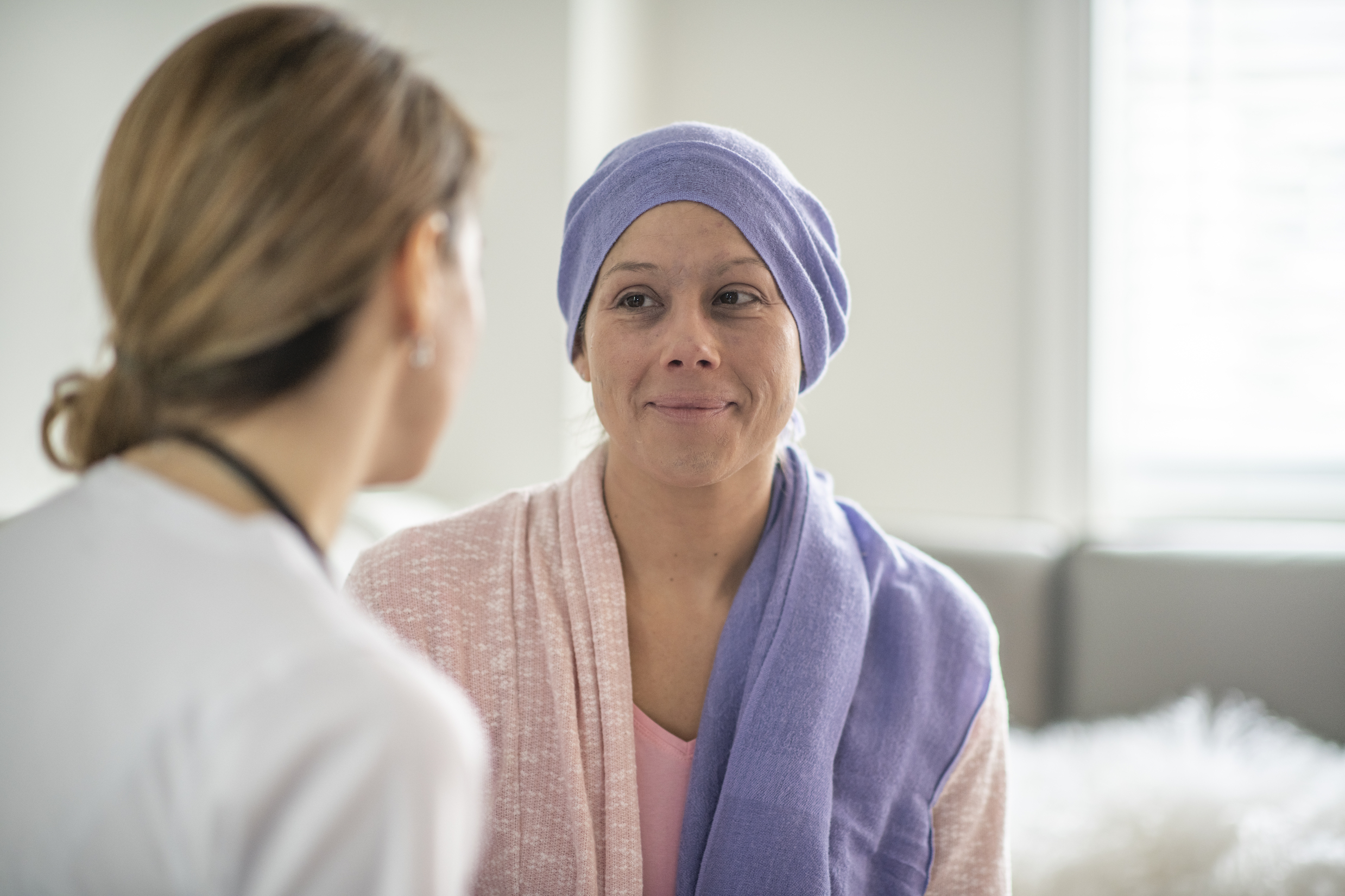
Health & Medicine
How to make it ok to record medical appointments

Research with palliative care patients and their clinicians on remote delivery suggests that, while it offers new opportunities, it can’t replace in-person connection
Published 27 July 2022
If ever there is a time when you really do need to see a doctor in person, as opposed to seeing them on a screen or talking on the phone, it is when you are visiting the palliative care doctor.
After all, palliative care isn’t just about medical care and symptom relief – there are also important conversations to be had, plans to be made, reassurance to be sought and given.

Face to face interaction, the touch of a hand, a reassuring exchange from one to another – these understated connections are a core part of care.
So, when restrictions to limit the spread of COVID-19 demanded that medical appointments go online, many health professionals in palliative care were particularly uneasy about the potential outcomes for patients. Clinicians wondered if effective palliative care could be delivered remotely.

Health & Medicine
How to make it ok to record medical appointments
Yet our findings in two recent papers (here and here), published in collaboration with colleagues from St Vincent’s Hospital Melbourne and Peter MacCallum Cancer Centre, have revealed that palliative care patients and doctors at each site found telehealth wasn’t only acceptable (91 per cent and 86 per cent respectively) but also satisfactory (72 per cent and 65 per cent) in most situations.
In our studies, involving interviews and surveys of 130 palliative care patients and their doctors following a telehealth appointment, patients in rural and regional area reported telehealth as being highly satisfactory. Doctors too rated it highly satisfactory when a visual link (not just audio) was used, or if the appointment was for a routine review.
However, patients were less satisfied when care goals or future planning were discussed, and doctors reported it as being less satisfactory when the patient’s condition was changing or rapidly worsening, or if patients spoke a language other than English.
And both patients and doctors found telehealth unsatisfactory in the presence of changing or unstable symptoms, such as pain which required medication adjustment or change.

Our interviews also revealed that telehealth delivery of palliative care appointments provided some new opportunities.
For example, it allowed people to see their doctor when otherwise they may have felt too tired or ill to attend an appointment in person. It saved time for patients who no longer had to sacrifice a good part of their day to attend an appointment.

Health & Medicine
Treating knee arthritis with online exercise and diet
Telehealth also allowed for new opportunities in ongoing care. For example, previously, patients attending a CT scan might try to save time by scheduling an appointment on the same day with any available palliative care doctor. Telehealth enabled them to see their usual doctor on another day at home, with no extra hospital trip required.
All these advantages of telehealth were new and unexpected. But there were downsides.
Almost two thirds of appointments were on the telephone only (with no visual link), and both patients and doctors described how this tended to make the appointments more casual. As a consequence, patients may be unprepared for the appointment. As one patient described:
“I left home and did some shopping… the consequences were that I was having a conversation [with the physician] on the main street.”

Similarly, patients may be ill-prepared for what might be discussed within the appointment. As one patient told us:
“The reality is that phone calls are so much more casual. So consequently, any sort of negative information might just be a real bombshell hitting us.”

Health & Medicine
Improving the care and wellbeing of cancer survivors
Others noted that language barriers were heightened with telehealth and even more so when using telephone only. The visual cues that are relied upon to understand and convey information when there are language gaps just aren’t available through the telephone.
Patients and clinicians both noted that telehealth delivery of care was a different type of relationship, one that lacked the therapeutic connection that is seen as important in palliative care. They found telehealth to be less about care and more about service delivery. This had implications for patient care, but also for physicians who reported telehealth being less rewarding. As one doctor put it:
“It’s sort of a transactional sort of thing… [telehealth] can diminish that therapeutic relationship to be sort of making you feel like a vending machine… rather than a good therapeutic consultation.”

Both patients and doctors see telehealth as inferior to face-to-face consultations, with one patient noting that:
“We’re all a bit scared at the end of life and you know, some reassurance… looking into somebody’s face or even a touch on the shoulder or shake of the hand makes a huge difference.”

Health & Medicine
Bringing clinical trials to regional patients
So, with all these findings, what does the future look like for telehealth in palliative care?
It seems likely that, given some of the advantages and convenience of telehealth, a hybrid model of care involving both face-to-face and telehealth appointments would offer a way forward.
In this model, initial appointments should be face-to-face – laying the foundations of the therapeutic relationship and establishing connections. Follow up appointments could then be by telehealth but punctuated with a face-to-face reviews, perhaps every fourth appointment or so.
In the event of changing or new symptoms, or when significant conversations need to be had, in-person review should also occur.

A hybrid approach like this would allow some of the advantages of telehealth to be realised, but also maintain the critical interpersonal connection.
In any long-term adoption of telehealth models, support for patients to access and use visual devices rather than only audio is also clearly essential.

Health & Medicine
How one misconception means seriously ill people miss out on care
Finally, the views of patients and clinicians should be revisited as the pandemic moves to different phases – when anxiety about contagion may be less and preferences to return to usual models of care may have changed.
In any model, it seems that telehealth is here to stay in some form, including in palliative care.
Professor Philip’s and Dr Collins’ co-researchers are Leeanne Pasanen, Peter MacCallum Cancer Centre; Dr Roslyn Le Gautier and Olivia Wawryk, St Vincent’s Hospital; Dr Aaron Wong, Peter MacCallum Cancer Centre and Royal Melbourne Hospital; and Dr Stephanie Schwetlik, North Adelaide Palliative Service, Modbury Hospital.
Banner: Getty Images